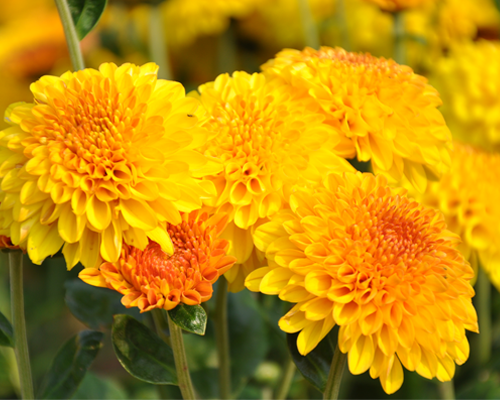
Simple tips to help you grow your chrysanthemum flowers
Chrysanthemum flowers are popular all over the world. These long-lasting flowers are also available in a variety of colors and styles. Growing them, however, is not as simple as it is with many other traditional flower varieties. Chrysanthemum care must take into account both the needs of the plant and the needs of its surroundings.
Here are 5 simple tips to help you grow your favorite flowers.
1.Chrysanthemum Propagation
Seeds or cuttings can be used to propagate the chrysanthemum. The most cost-effective method is seed propagation. If you don’t have time to wait for your first blooms, the other forms are much faster.
However, to ensure that future blooms are better and stronger, and that the chrysanthemum variety remains consistent,In your farm or greenhouse, you should always plant seedlings.
In their second year, chrysanthemum seedlings will bloom. But keep in mind that if you start with a specific variety, you should grow that variety from seed for as long as possible to ensure the same color and blooming type.
2. Plant in the spring
Plant your chrysanthemums between late March and mid-April. Chrysanthemums prefer rich soil with lots of organic matter, so mix in some compost or rotted manure before planting.
Dig a hole twice the size of the root ball and deep enough to place the entire root system below the soil line; remove any circling roots and spread them out horizontally in the bottom of the hole before covering them with loose soil.
3. Watering your Chrysanthemums on a regular basis
Different Chrysanthemum species have different watering requirements. However, most varieties only require watering every four days or so. Some varieties require less water, while others require more frequent watering.
Keep an eye out for overwatering. Because overwatering causes root rot in chrysanthemum plants, it is critical to water them sparingly. You should avoid watering your plant with tap water because chlorine can harm the plant roots over time. Just make sure to keep an eye on them so you know when they need more or less water.
4. Feed Your Chrysanthemum Regularly
Fertilizer is used in the care of chrysanthemums. Depending on the type of chrysanthemum, the type of fertilizer, the dose, and the timing of fertilizer application may differ.
Every 20 days, chrysanthemum fertilizer should be applied. The concentration should be low and the amount small. Nitrogen fertilizer is especially important because it promotes rapid growth of the flower. However, fertilizing chrysanthemums more than necessary can cause root burn. Potassium fertilizer improves the ability of stems to bear flowers. It also prevents leaf discoloration by improving water transport within the plant. Magnesium-containing fertilizer promotes leaf coloration and blooming by promoting cell division in buds before they open.
5. Keeps Your Flower Disease-Free
Botrytis blight, also known as gray mold disease, and powdery mildew are two of the most common.
Powdery mildew does not only affect chrysanthemums; it can affect a wide range of flowering plants. Powdery mildew appears on the blooms as white or gray patches. Powdery mildew attacks the leaves as well, causing them to curl and discolor. Powdery mildew degrades the appearance of chrysanthemum flowers and can shorten their lifespan.
Botrytis blight causes brown spots on the flowers and leaves, which eventually shrivel and turn black. To keep the disease from destroying your favorite chrysanthemums. To keep your chrysanthemums disease-free, keep them in optimal growing conditions.
